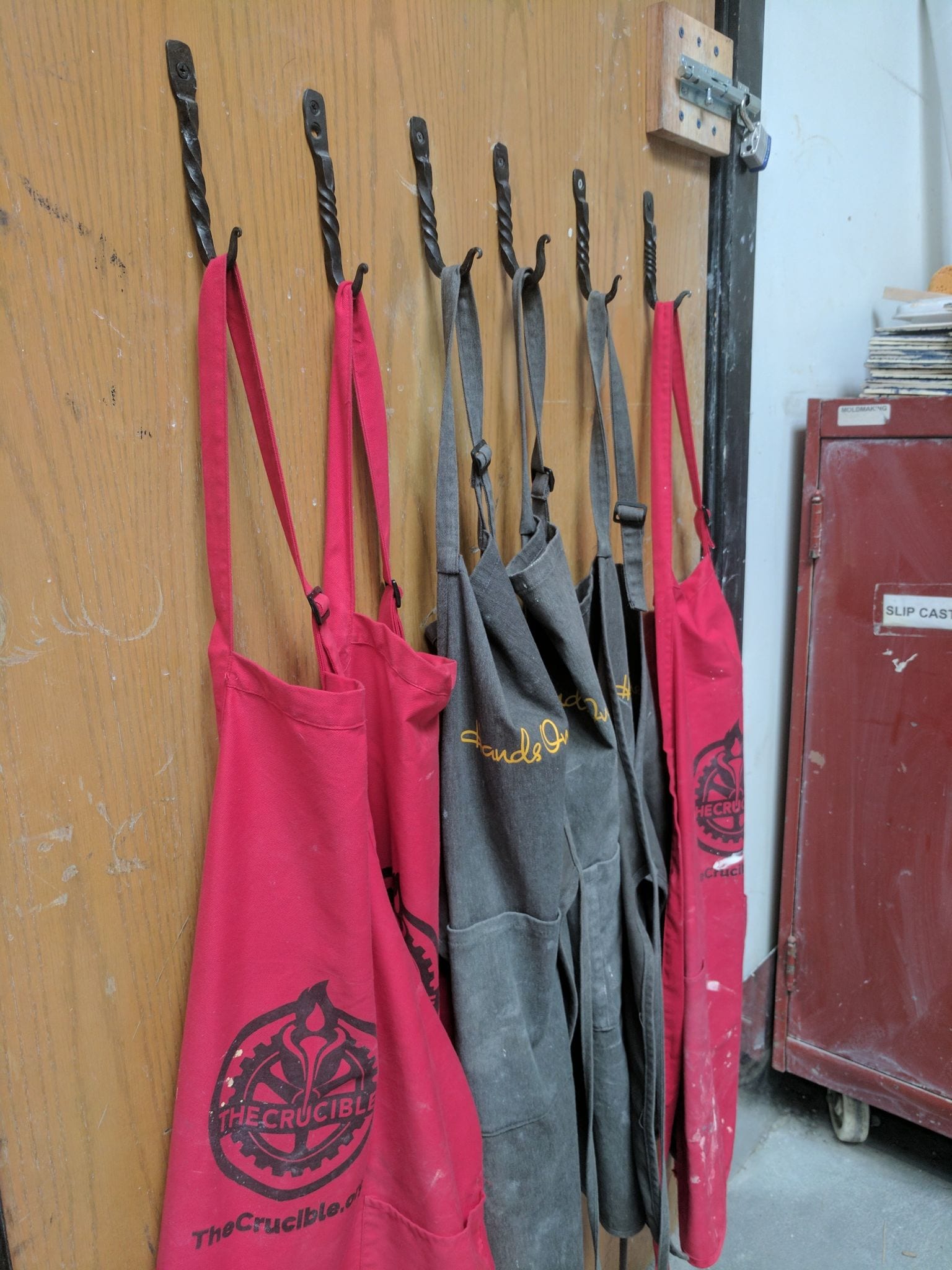by Natasha von Kaenel
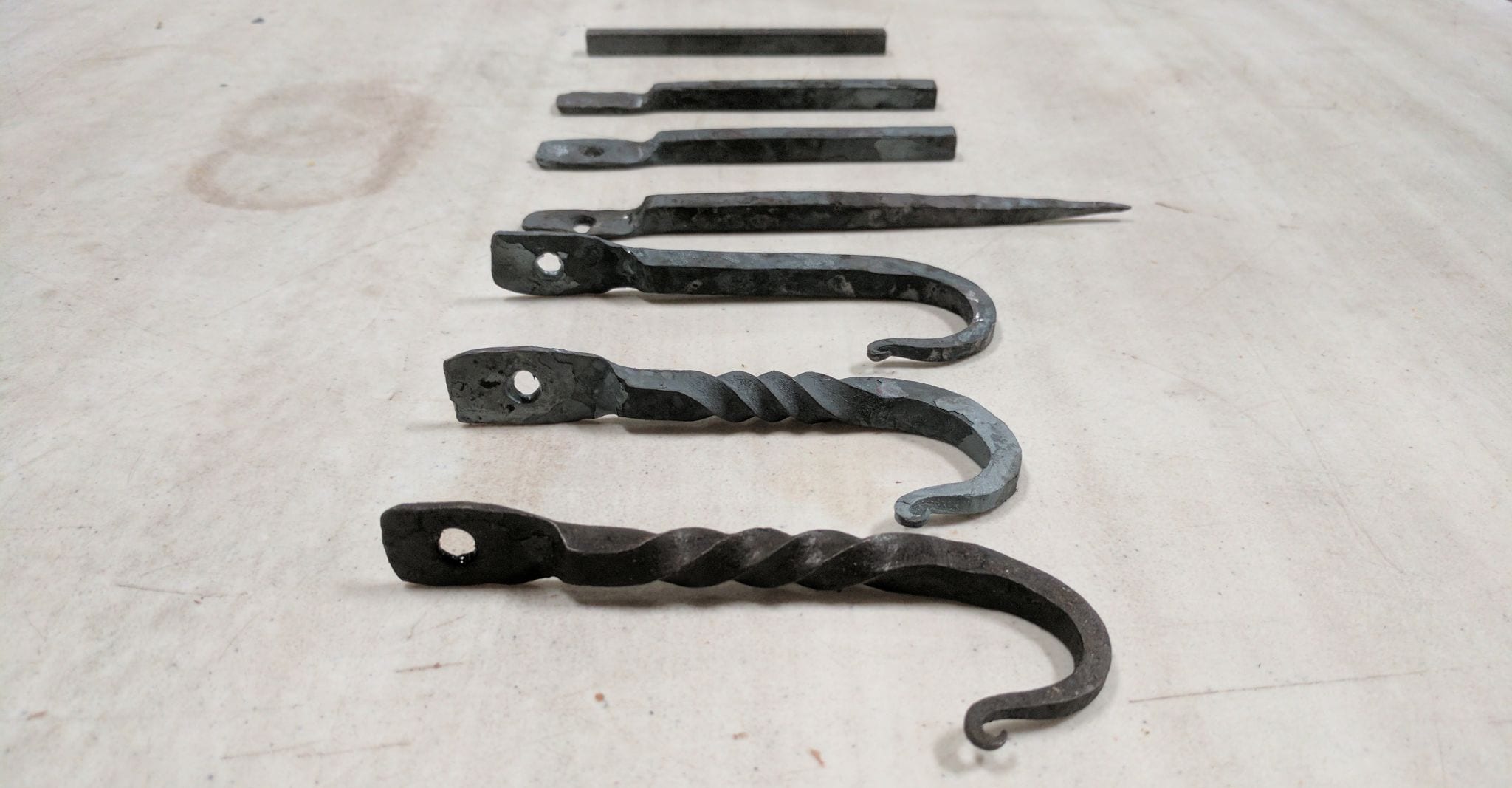
Making a hook is the first project in Blacksmithing I, and helps students begin to develop their tapering, bending, twisting, and punching skills. These techniques are crucial in more advanced blacksmithing projects, and many faculty members in our Blacksmithing Department regularly practice making hook after hook, perfecting their form and technique during this quick, fun project!
Students have installed these hooks all over their houses and studios to hang coats, pots and pans, keys, oven mitts, jewelry, hats, and everything else you can imagine! See below for a step-by-step guide to making a hook, then try it yourself in one of our upcoming Blacksmithing I courses. After completing one class in our Blacksmithing department, students are welcome to come back on Thursday afternoons, during lab time, and use our smithy for free to work on their own projects and continue developing their blacksmithing skills.
Step 1
Create Shoulder
Place the bar of red-hot steel along the edge of the anvil at about a 10° angle and strike at the edge of the anvil to create a shoulder. Gradually raise the steel until it is level, striking the edges with consistent overlapping blows to flatten.
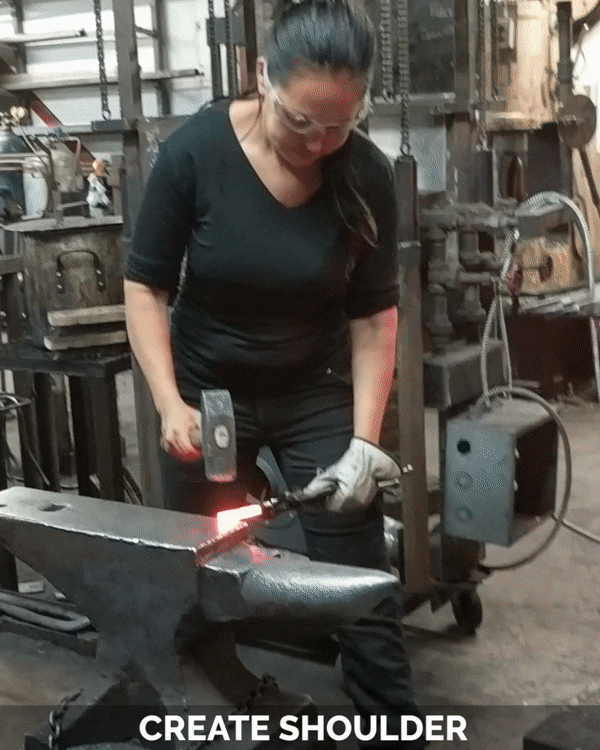
Step 2
Square Sides
Rotate your steel bar 90° and strike the sides of the shoulder with a flat edge hammer to square it off. If the bar becomes bent, strike twice at its highest point to flatten it out before going on to the next step.

Step 3
Punch Hole
Before removing the steel from the forge, attach the face plate to the anvil. Then, grab the piece from the forge, hold it down with the punch, and strike on one side until the punch is about 3/4 of the way through. Repeat this on the other side of the shoulder, then move the piece to the size hole you wish to have on the hook. Then drive the punch all the way through the hole on the face plate.

Step 4
Taper To Point
Place the piece at the edge of the anvil farthest from you, then keeping the tip on the anvil, raise the piece up about one-inch. Strike the piece with angled blows, rotating it 90° with each hit. Once you have tapered the tip to 1/16″, lie the piece flat, and strike at the top of the taper, continuing to rotate it 90° with each hit. Every 6-8 hits, turn the piece 180° so you are applying force evenly along the other two sides.

Step 5
Curl and Cool Tip
Remove the red-hot piece from the forge, and place it on the anvil with 1/2″ over the edge. Lightly strike the point of the taper until it is bent into an L-shape. Rotate the piece 180° so the tip is pointing in the air, then strike the tip towards your body, so that it creates a curled tip. Quench the curled tip in water.
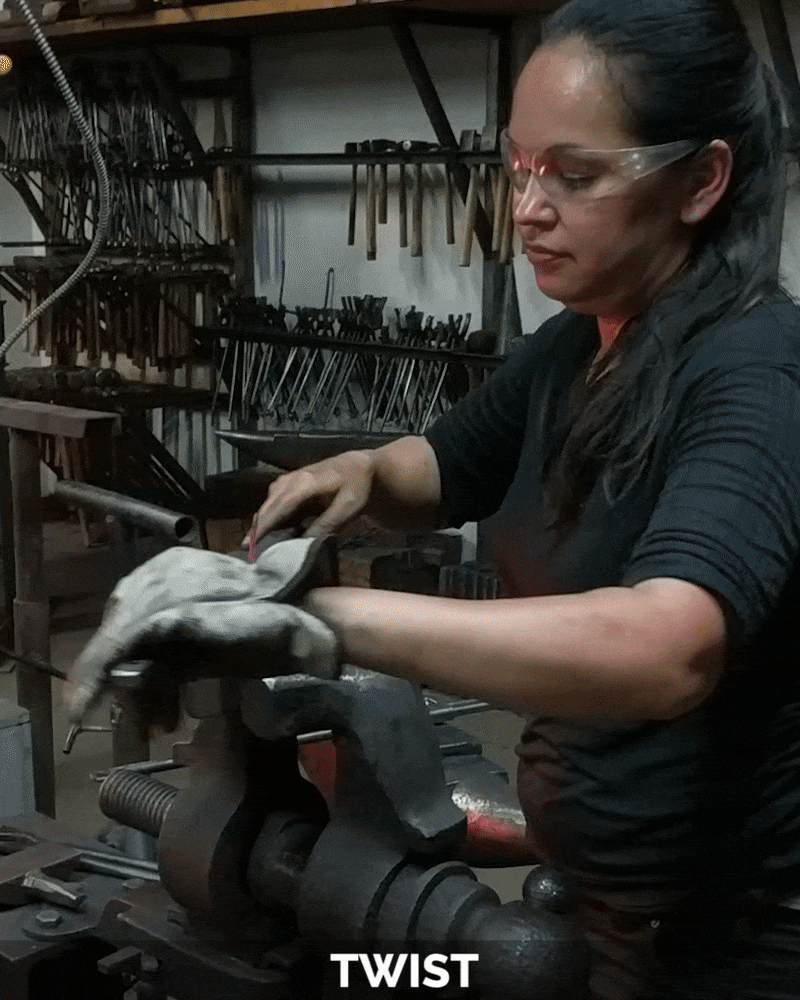
Step 6
Bend Over Anvil
Place your piece on the horn of the anvil and strike with consistent blows, bending your piece along the curve of the horn to form the hook shape.
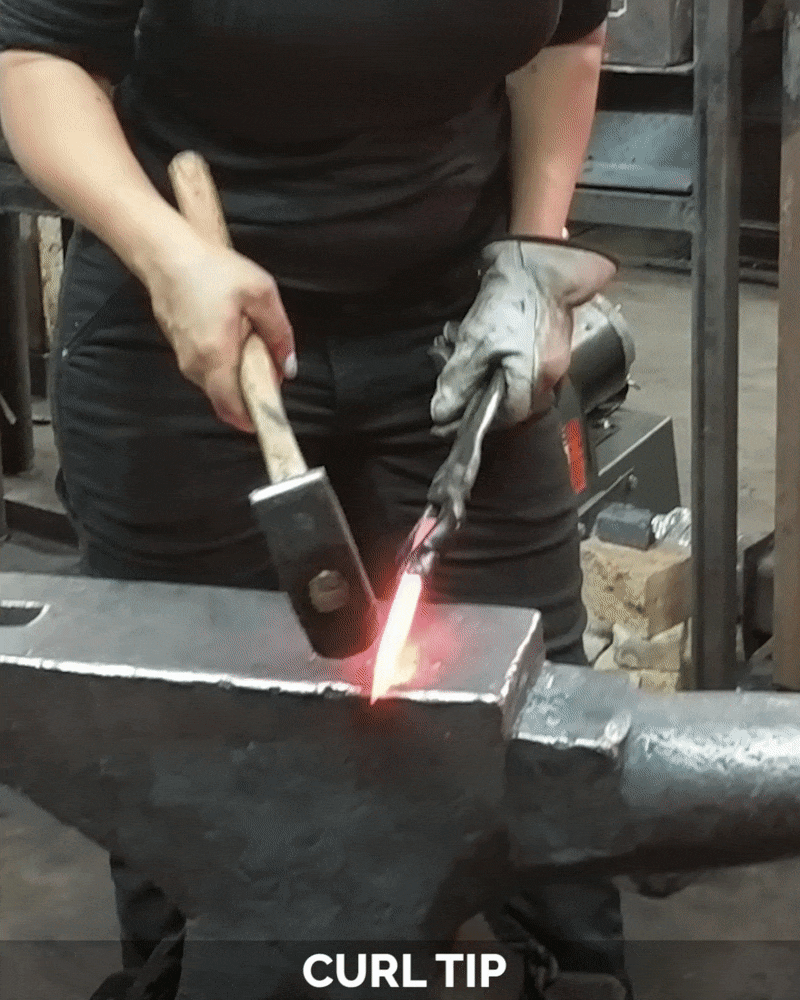
Step 7
Twist
Before placing the piece back in the forge, make sure to set the wrench jaws to the appropriate width of the piece. Once the piece is completely red-hot from the forge, place it in the vice hook with the punched hole at the top. Place the twisting wrench jaws right under the shoulder of the piece, then twist.
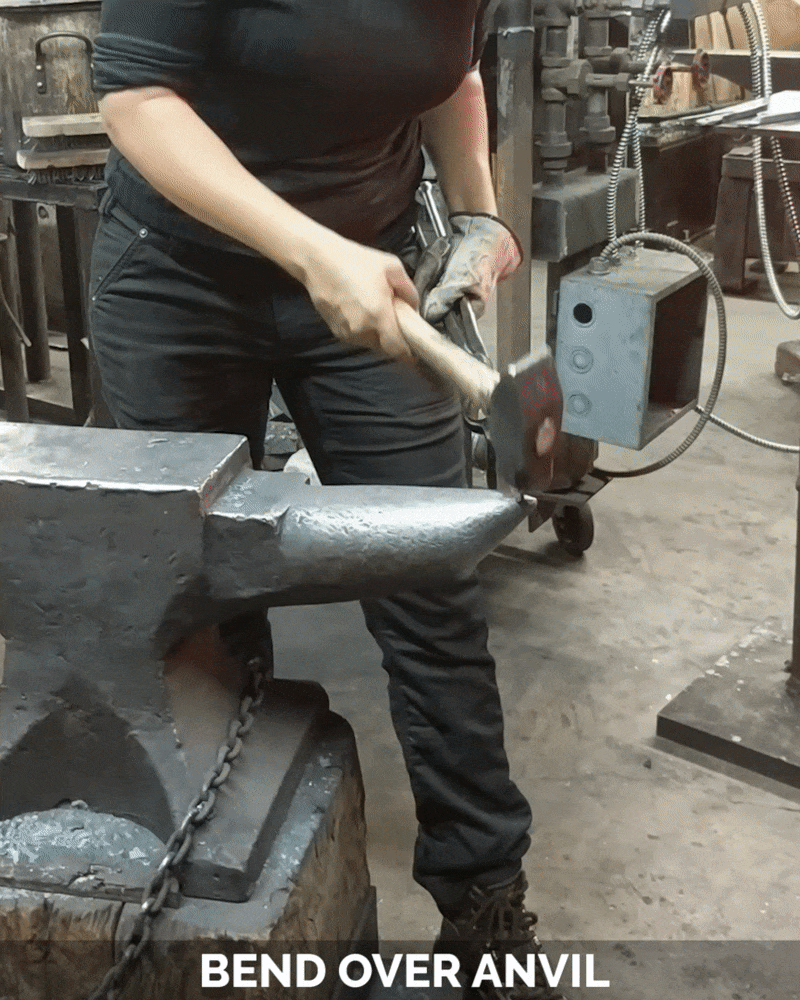
Step 8
Scrape Off Slag
When your piece is red-hot from the forge, use a metal wire brush to scrape off the slag, the scale that forms from repeatedly heating steel.
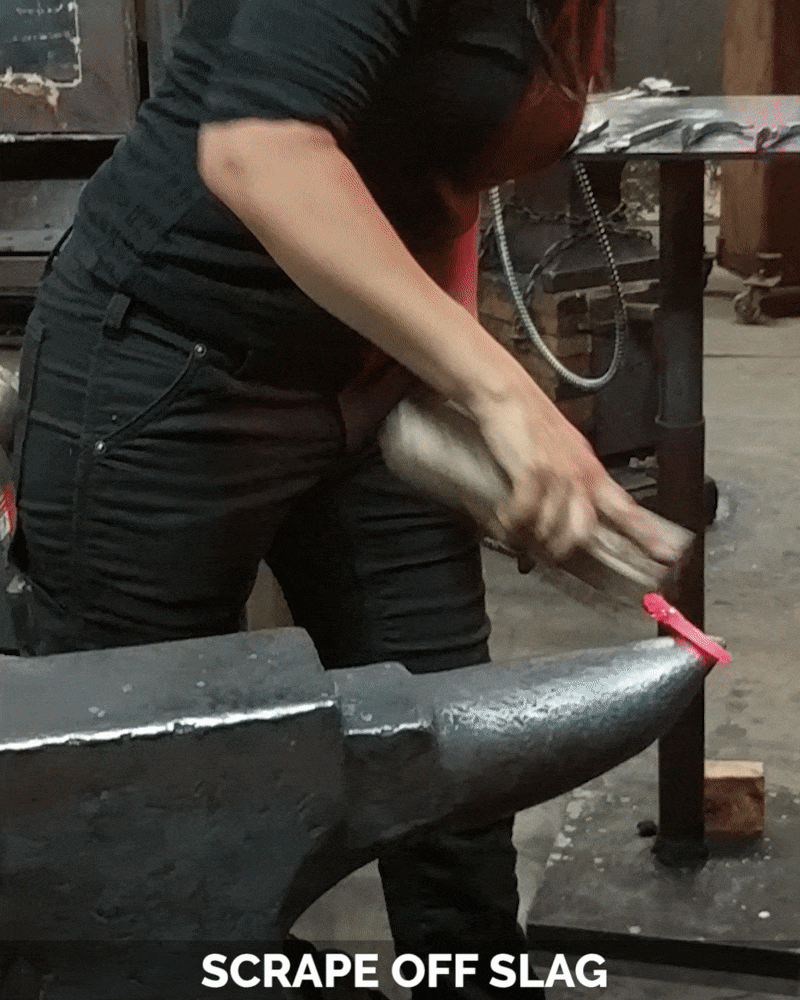
Step 9
Coat In Oil
Directly after removing the slag, repeatedly dip your hook in a bucket of oil to protect it. Once completely covered, if necessary, hold your piece next to the forge until it turns a matte black.
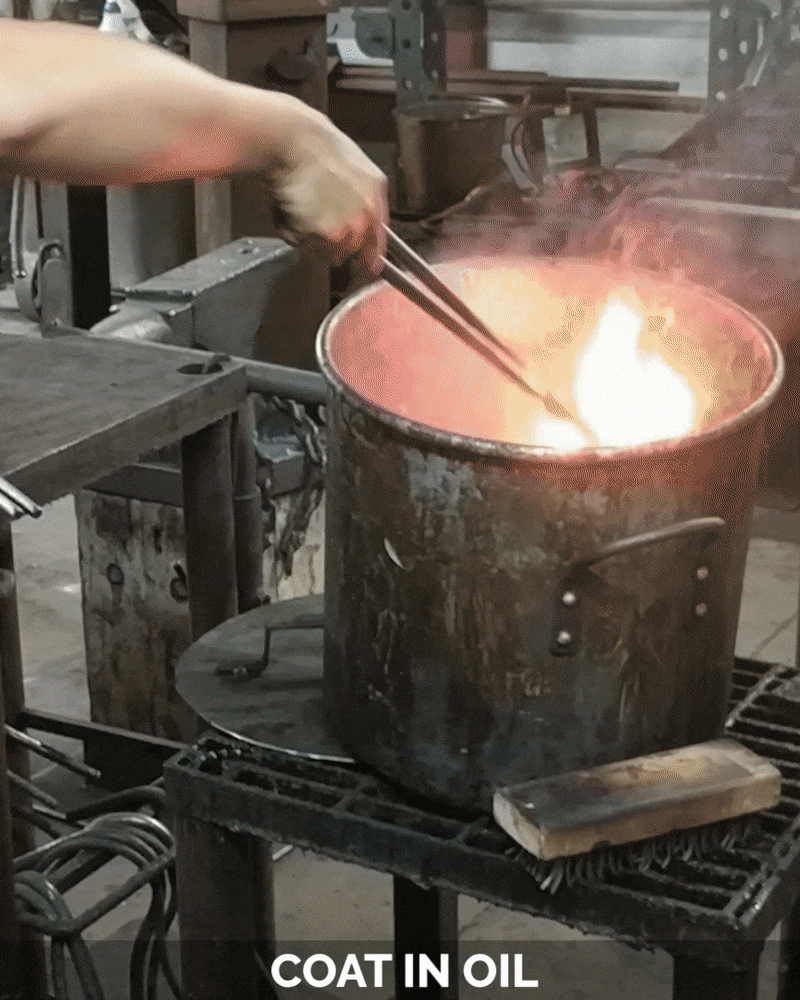
Step 10
Install!
With a punched hole ready to go, these hooks are easy to install throughout your home. Screw them onto a wooden board for a stylish place to hang your pots, or weld them onto a metal frame in our Welding department, designing your very own DIY metal coat rack!
